The History of the European Union
By Carlos Rodriguez Abellán – History teacher – Spain
Its Origins
Following the devastation caused by the horrors of World War II , Europe became aware of the need to create a supranational integration project to ensure that the old Europe could fight its way among the great powers that were now ruling worldwide.
Moreover, it was necessary to create a system of alliances aimed at growing together, creating jobs and avoid the emergence of new conflicts that could compromise the future of the new generations. Full awareness of the new challenges that arose in a increasingly globalized world, although divided into 2 blocks, manifestly antagonistic, representing different ways of interpreting the world, the economy and the framework of coexistence: the capitalism, represented by the USA, and communism, led by the USSR.
The Europe of the 6
The first step in the process of European unity was the creation, in April 1951,
of the European Coal and Steel Community, CECA, with the aim of achieving a common market for these supplies and a balanced and unified production among its members.
The founding countries were: France, Germany, Italy and Benelux (Belgium, Holland and Luxembourg). Great Britain rejected it as a limitation on its sovereignty. The original idea, conceived by the Frenchman Robert Schuman, was to create a common European market, as the first step towards a federal political unity. The economic success of the CECA strengthened this idea and in 1957, these countries signed the Treaty of Rome, which would end with the creation of the European Economic Community, EEC and the European Community of Atomic Energy, EURATOM. The idea was to create supranational institutions with legislative capacities, which would require their members to exercise their commitments. The need to create a common market for the free trade of products, capital and workers, a single tariff rate, a common policy was also raised of economic harmonization and a joint agricultural policy. In 1962 the European Parliament will be created. A few years later, in 1965, the three institutions (CECA, EEC and EURATOM) were unified thanks to the signing of the Merger Treaty, giving shape to the European Community, EC, the seed of the current European Union, which came into force in 1967.
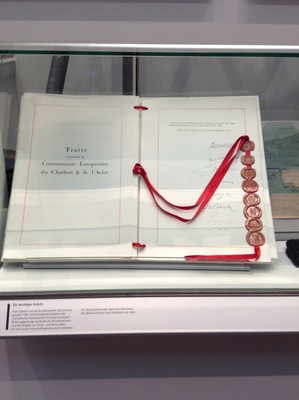
The Europe of the nine (1969 – 1980)
From that moment other countries will join: Great Britain, Ireland, Denmark and Ireland in January 1973. This year's energy crisis will make it essential to define a new community energy policy, but the lack of solidarity of the member states caused them to respond to the crisis individually. All of this led to the generalized crisis of confidence and the danger of a disintegration of the Union, proposing a response that would materialize at the Paris summit in December 1974, and that would raise the need to solve the crisis within the framework of the community.
The European Council met in Rome in 1975 and agreed on the necessary mechanisms for a cooperative intergovernmental political framework and for the creation of a European identity.
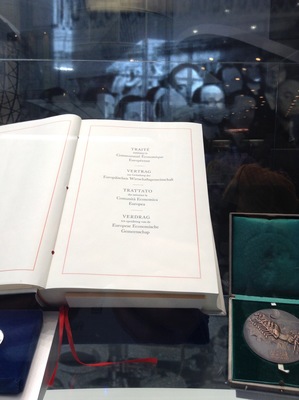
Towards the Europe of the twelve (1981 – 1991): from the single European Act to the Maastricht Treaty
Faced with the new crisis, the international economic recession and a period of multilateral conflicts, such as the invasion Afghanistan's by the Soviets, and Ronald Reagan's rise to power in the US, predicted a rebound in Cold War tensions, causing concern among member states about becoming a battlefield between the two superpowers. On the other hand, the transition towards democratic processes in some southern states and the will to prevent them from aligning themselves around one of the two hegemonic axes, led to their progressive integration into the European community. In 1981, Greece joins the EC, followed in 1986 by Spain In 1986, new cooperation agreements were created through the signing in Luxembourg of the Single Act, in areas such as research, the environment, technological development and social policies. The single European market and European Political Cooperation were formally established.
The Treaty of Maastricht
Between 1991 and 1992 the Maastricht Treaty was carried out, aimed at improving the cooperation framework among member countries. It was signed by the 12 members, and will lay the foundations for the euro, the European citizenship and the commitment of each of the states to join it, in addition to guaranteeing the four basic freedoms (the free movement of goods, services, capital and people across the EU).
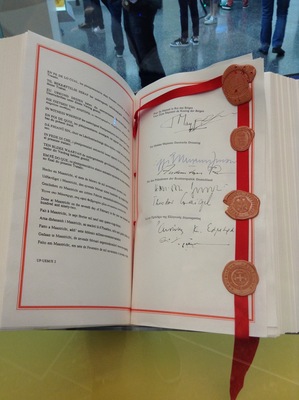
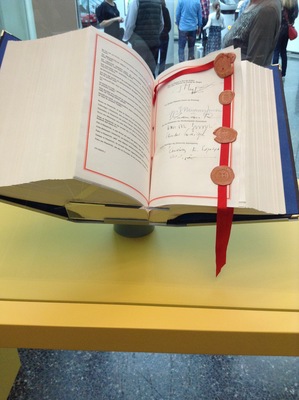
The Agenda 2000
In 1997, a report called "Agenda 2000" was presented with the main issues to be resolved by the European Union in the coming years: the geographical enlargement, the review of the financial perspectives, the review of the Structural and Cohesion Funds, the Agricultural Policy, etc. In 1999, the Amsterdam Treaty entered into force, which meant the commitment to comply with certain common standards in different areas such as: principles of freedom, democracy and human rights, including sustainable development.
On February 26, the Treaty of Nice was signed and its entry into force was established on February 1, 2003, with the aim of reforming the institutions so that the EU could function efficiently being now 25 members.
On May 1, 2004, the largest enlargement of member states in the history of the European Union took place. 10 countries joined: Estonia, Latvia, Lithuania, Poland, the Czech Republic, Hungary, Slovakia, Slovenia, Malta and Cyprus; and on October 29th, the European Constitution was approved, which had to be endorsed by all the member states in their respective countries, and in some cases, such as Spain, it was approved through referendums, with 76.73% of votes in favour. However, both France and the Netherlands did not approve it, and a period of reflection was opened. In 2007, Bulgaria and Romania joined and the Berlin Declaration was signed, ending the period of reflection and the European Council definitively rejecting the European Constitution, despite the fact that the majority of the articles were incorporated into the reform of the different treaties that materialized in the signing of the Treaty of Lisbon.
The Treaty of Lisbon and the Europe of the 28
The Lisbon Treaty was signed on December 13th, 2007 with the aim of making the EU more democratic, more efficient and more able to address, with one voice, global problems, such as climate change. The main changes that occurred were: increased powers of the European Parliament, change in voting procedures in the Council, citizens' initiative, permanent nature of the post of President of the European Council, new post of High Representative for
Foreign Affairs and new diplomatic service of the EU. The aim was to gain efficiency in decision-making through qualified majority voting and offer a Parliament with greater weight in decision-making, which will be complemented by the European Council.
During the Great International Economic Recession that began in 2007 and became widespread in 2008, and the euro crisis, which tested the foundations of the European Union, many member states felt an embarrassing lack of solidarity, which had its maximum
expression in the Greek case. However, the European Bank finally stopped the bleeding by buying debt, but it did not stop the austerity policy that entailed a restriction on spending and a slowdown in the economic recovery. Croatia joined the Union on July 1, 2013 forming the Europe of 28. The efforts carried out by Germany and France to promote a European refoundation brought a new crisis manifested in Brexit and in the withdrawal of Great Britain from the European Union, endorsed by referendum with 51.9% support. Some of the problems cited were the migration crisis and the loss of British sovereignty. The global pandemic crisis has brought up the need to mutualize the debt and revitalize investments in order to face the new challenges of the future, such as energy autonomy, through renewable energies, sustainable development in harmony with our environment, broad social policies to reduce inequality; harmonize fiscal policies and occupy its own geopolitical position that does not depend on the other great superpowers. Lastly, a new challenge is currently being presented to us by placing ourselves in the midst of a conflict of interests between superpowers (USA and Russia) over the Ukrainian issue, which could paralyze the recovery plans proposed by the EU (Next Generation EU), the most ambitious in its history, due to the possible contingencies caused by the war and the danger of its spreading within European borders.
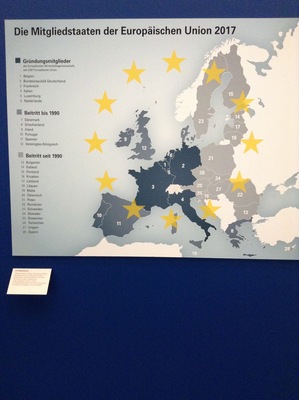
The main barriers
The concept of supranational integration, which emerged after World War II, will break with the traditional awareness of indivisible nationality and sovereignty, but it will not lack
obstacles that can make it difficult to resolve the tension between national sovereignty and the construction of a common political and economic framework. . On the other hand, the greatest challenges that concern humanity as a whole and that transcend the very concept of the nation state, are those related to the climate, digitization, energy and inflation, inequality, security and the defense of our integrity and the economic recovery.
Lastly, it should be noted that what appears to be necessary and essential is the search for circuits of cooperation between the blocs and superpowers and to create a necessary critical awareness of the species and a planetization that replaces the idea of globalization, which is not always so positive, that allows us to continue growing without compromising our environment and without generating so much misery and inequality.
Text by Carlos Rodriguez Abellán - History teacher - Spain
Translated by isabel Martínez, English teacher, Spain.
Pictures by Christiane Eichel - English teacher - Germany - taken in the Haus der Geschichte - Bonn - Germany